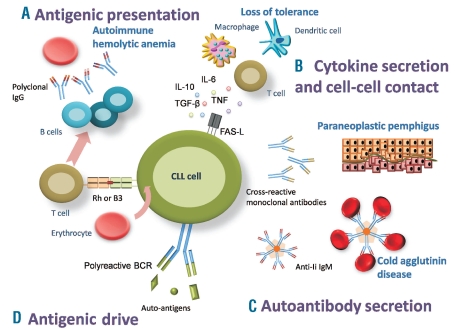Figure 1.
Mechanisms of autoimmune disease in CLL. (A) CLL cells may process red blood cell antigens and act as antigen presenting cells, inducing a T-cell response and the formation of polyclonal antibodies by normal B cells, thus indirectly provoking autoimmune hemolytic anemia. (B) CLL cells express inhibitory cytokines that alter tolerance, which may facilitate the escape of self-reactive cells. (C) Rarely CLL cells are effector cells that secrete a pathological monoclonal autoantibody. Two such diseases are paraneoplastic pemphigus, where immunoglobulins are cross-reactive with epitopes located at the dermal-epidermal junction, and cold agglutinin disease, where IgMs have anti-red cell reactivity. (D) In turn, CLL cells may be stimulated through their polyreactive BCR that recognizes auto-antigens.

